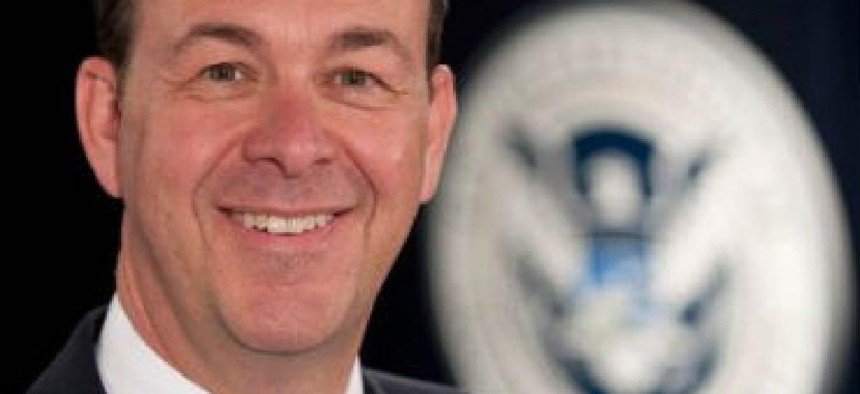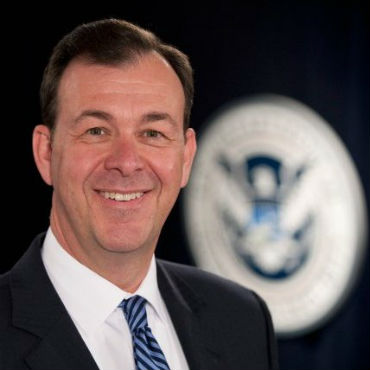New federal CISO is in it for the long haul

U.S. Chief Information Security Officer Greg Touhill said he doesn't plan on going anywhere come January and is moving to improve federal cybersecurity awareness and coordination.

U.S. CISO Greg Touhill said he "plans to be around for the next two years."
The first U.S. chief information security officer hopes to serve for awhile, no matter who wins the presidential election.
"I raised my hand to serve. I expect a full tour," CISO Greg Touhill said. "I expect to be here through the transition."
Touhill, a retired Air Force brigadier general and former deputy assistant secretary for cybersecurity and communications at the Department of Homeland Security, was tapped as the nation's first CISO in September. Agency security chiefs are looking to Touhill to help them build on their ideas and give them more of a voice in federal policy circles.
Both U.S. CIO Tony Scott's and Touhill's positions are political appointments, however, which means they serve at the pleasure of the president.
At the AFCEA Cybersecurity Summit on Oct. 11, Touhill said he was confident his mission and strategy to protect federal IT are vital to any administration. When asked about his future, he said he "plans to be around for the next two years," though he realizes that might not happen. "Like all [political appointees], I'm on a Cinderella clock."
In his speech, he outlined some of his plans, current efforts and hopes for federal cybersecurity.
Central to them are the Cybersecurity National Action Plan and its call for an IT Modernization Fund to replace legacy government IT systems. Both are critical to cybersecurity across government, he said.
As the transition to the next administration is made, Touhill said he plans to meet with all incoming senior agency IT executives for an initial hour-long desktop cybersecurity exercise to emphasize the basics of cyber response and hygiene.
"You can get a lot accomplished in an hour," he said.
More immediately, he said he is working with a new federal CISO Council to share best cybersecurity practices and experiences. The first official meeting of that group, which is composed of federal and private-sector officials, will be Oct. 28.
Additionally, Touhill plans to launch a new website in the coming weeks, called Cyber.gov, that will pull best security practices and lessons from industry and government sources such as DHS. The results from the first CISO Council meeting will also be posted online, and he said he hopes the site will become a central repository for good ideas and a resource for CISOs.
More widely, Touhill plans a public campaign to help keep cybersecurity concerns in the public limelight. He advocated creating a character to whom children could relate to instill good cybersecurity habits early on -- something along the lines of the U.S. Forest Service's Smokey Bear and law enforcement's McGruff the Crime Dog. Contests among schoolchildren could help refine plans for a character tentatively named Byte.
"Stop, Think and Connect," he said, quoting DHS' cybersecurity month slogan, "is great, but we would help define an enduring reminder of cybersecurity."
Touhill also wants to introduce bug bounties for federal systems, with prize money for IT workers who ferret out problems being paid by the "offending agency" where the bug was found.
More broadly, he sketched out five items on his to-do list to make federal systems less vulnerable to threats. Driving each goal is the idea that IT security should be a business decision made in top managers' offices, not in data centers in the field.
Better workforce training was at the top of the list. Feds and contractors are the "first line of defense," he said, and the entire workforce, not just IT workers, needs more training regarding the threats and how to mitigate them. Touhill has previously said he plans to use his experience as a leader in Air Force cyber training programs to develop the skill sets that would benefit the cybersecurity workforce.
He said the fundamental skills are creative thinking, the ability to speak foreign languages, mathematics, critical reading and writing, and a basic understanding of logic and philosophy.
A second priority is to treat information as an asset and protect it according to its value. The Cybersecurity National Action Plan requires agencies to identify and protect high-value assets, he pointed out.
Basic cyber hygiene -- or "doing the right things the right way" -- is a foundation of effective federal cybersecurity, Touhill said, and programs like DHS' Continuous Diagnostics and Mitigation are essential tools.
Constant innovation and wise investment will allow federal agencies to improve systematically instead of sporadically and unevenly, providing a smoother, more effective path to tighter, secure IT systems, he added.
"Informed cyber risk decisions, made at the right level," form the security bedrock for federal IT, Touhill said. With data-driven analytics, CIOs can identify weaknesses and strengths and get those findings "in front of decision-makers," he added.





